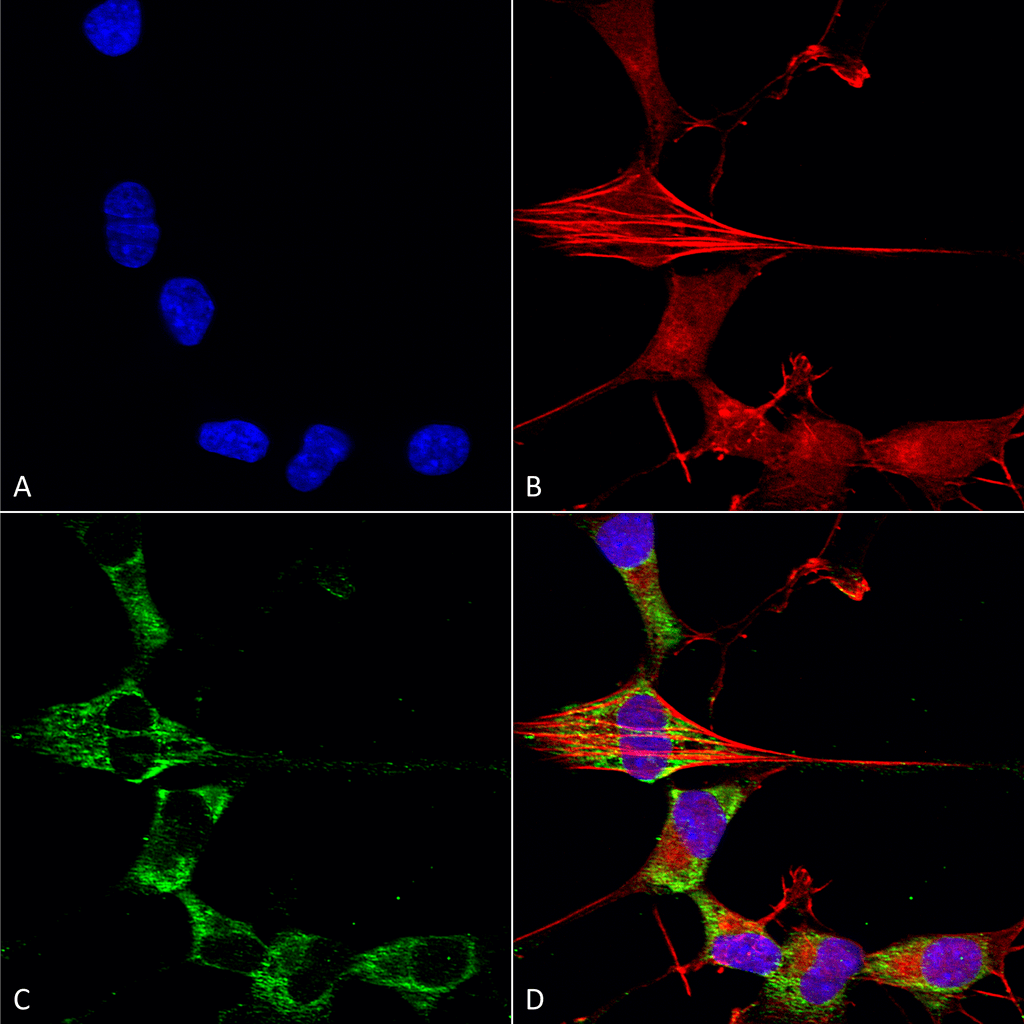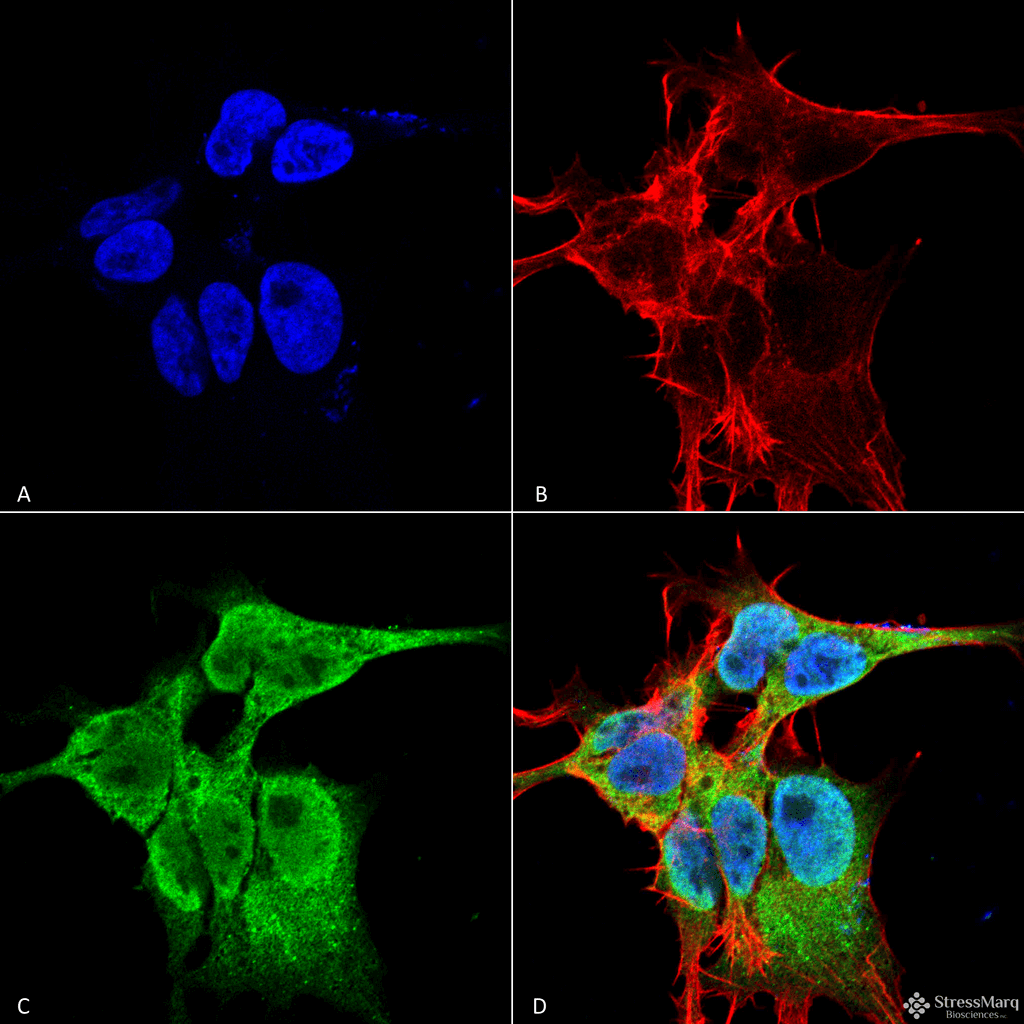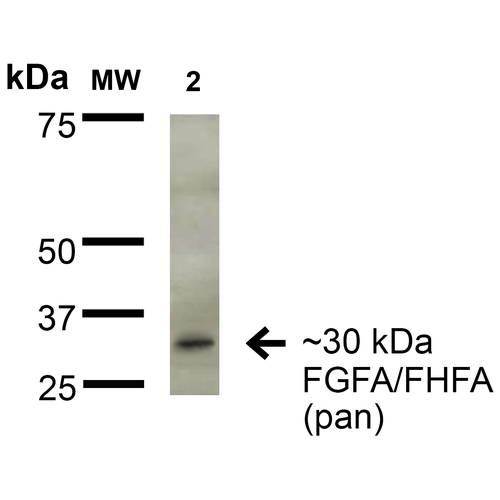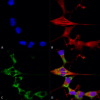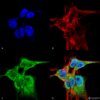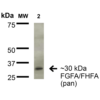Anti-Fibroblast Growth Factor 13 (FGF13) Antibody (30109)
$466.00
| Host | Quantity | Applications | Species Reactivity | Data Sheet | |
|---|---|---|---|---|---|
| Mouse | 100ug | WB,IHC,ICC/IF | Human, Mouse, Rat |  |
SKU: 30109
Categories: Antibody Products, Growth Factors/Cytokines/Receptor Antibodies
Overview
Product Name Anti-Fibroblast Growth Factor 13 (FGF13) Antibody (30109)
Description Anti-Fibroblast Growth Factor 13 (FGF13) Mouse Monoclonal Antibody
Target Fibroblast Growth Factor 13 (FGF13)
Species Reactivity Human, Mouse, Rat
Applications WB,IHC,ICC/IF
Host Mouse
Clonality Monoclonal
Clone ID S235-22
Isotype IgG2b
Immunogen Fusion protein corresponding to aa 2-18 (AAAIASSLIRQKRQARE) of human FGF13. This sequence is 100
Properties
Form Liquid
Concentration 1.0 mg/mL
Formulation PBS, pH 7.4, 0.1% sodium azide, 50% glycerol.
Buffer Formulation Phosphate Buffered Saline
Buffer pH pH 7.4
Buffer Anti-Microbial 0.1% Sodium Azide
Buffer Cryopreservative 50% Glycerol
Format Purified
Purification Purified by Protein G affinity chromatography
Specificity Information
Specificity This antibody recognizes human, mouse, and rat FGF13.
Target Name Fibroblast growth factor 13
Target ID Fibroblast Growth Factor 13 (FGF13)
Uniprot ID Q92913
Alternative Names FGF-13, Fibroblast growth factor homologous factor 2, FHF-2
Gene Name FGF13
Sequence Location [Isoform 1]: Nucleus, Nucleus, Nucleus, Nucleus, Nucleus, Cell projection, growth cone, Cell projection, dendrite, Cell membrane, sarcolemma, Cytoplasm
Biological Function Microtubule-binding protein which directly binds tubulin and is involved in both polymerization and stabilization of microtubules (By similarity). Through its action on microtubules, may participate in the refinement of axons by negatively regulating axonal and leading processes branching (By similarity). Plays a crucial role in neuron polarization and migration in the cerebral cortex and the hippocampus (By similarity). Regulates voltage-gated sodium channels transport and function (PubMed:15282281, PubMed:33245860). May also play a role in MAPK signaling (By similarity). Required for the development of axonal initial segment-targeting inhibitory GABAergic synapses made by chandelier neurons (By similarity). {UniProtKB:P70377, PubMed:15282281, PubMed:33245860}.
Research Areas Growth Factors, Cytokines, Receptors
Background FGF13 (also known as FGF2 and FHF2) is a member of the fibroblast growth factor family. FGF family members possess broad mitogenic and cell survival activities, and are involved in a variety of biological processes including embryonic development, cell growth, morphogenesis, tissue repair, tumor growth, and invasion. The FGF13 gene is located in a region on chromosome X that is associated with Borjeson-Forssman-Lehmann syndrome (BFLS), making it a candidate gene for familial cases of BFLS and other syndromal and nonspecific forms of X-linked mental retardation mapping to this region. Alternative splicing of this gene at the 5′ end results in several transcript variants encoding different isoforms with different N-termini.
Application Images




Description Immunocytochemistry/Immunofluorescence analysis using Mouse Anti-FGFA/FHFA (pan) Monoclonal Antibody, Clone S235-22 (30109). Tissue: Neuroblastoma cells (SH-SY5Y). Species: Human. Fixation: 4% PFA for 15 min. Primary Antibody: Mouse Anti-FGFA/FHFA (pan) Monoclonal Antibody (30109) at 1:50 for overnight at 4°C with slow rocking. Secondary Antibody: AlexaFluor 488 at 1:1000 for 1 hour at RT. Counterstain: Phalloidin-iFluor 647 (red) F-Actin stain; Hoechst (blue) nuclear stain at 1:800, 1.6mM for 20 min at RT. (A) Hoechst (blue) nuclear stain. (B) Phalloidin-iFluor 647 (red) F-Actin stain. (C) FGFA/FHFA (pan) Antibody (D) Composite.

Description Immunocytochemistry/Immunofluorescence analysis using Mouse Anti-FGFA/FHFA (pan) Monoclonal Antibody, Clone S235-22 (30109). Tissue: Neuroblastoma cell line (SK-N-BE). Species: Human. Fixation: 4% Formaldehyde for 15 min at RT. Primary Antibody: Mouse Anti-FGFA/FHFA (pan) Monoclonal Antibody (30109) at 1:100 for 60 min at RT. Secondary Antibody: Goat Anti-Mouse ATTO 488 at 1:100 for 60 min at RT. Counterstain: Phalloidin Texas Red F-Actin stain; DAPI (blue) nuclear stain at 1:1000; 1:5000 for 60 min RT, 5 min RT. Localization: Cell Projection, Nucleus, Cytoplasm. Magnification: 60X. (A) DAPI (blue) nuclear stain. (B) Phalloidin Texas Red F-Actin stain. (C) FGFA/FHFA (pan) Antibody. (D) Composite.

Description Western Blot analysis of Rat Brain Membrane showing detection of ~30 kDa FGFA/FHFA (pan) protein using Mouse Anti-FGFA/FHFA (pan) Monoclonal Antibody, Clone S235-22 (30109). Lane 1: Molecular Weight Ladder. Lane 2: Rat Brain Membrane. Load: 15 µg. Block: 2% BSA and 2% Skim Milk in 1X TBST. Primary Antibody: Mouse Anti-FGFA/FHFA (pan) Monoclonal Antibody (30109) at 1:200 for 16 hours at 4°C. Secondary Antibody: Goat Anti-Mouse IgG: HRP at 1:1000 for 1 hour RT. Color Development: ECL solution for 6 min in RT. Predicted/Observed Size: ~30 kDa.
Handling
Storage This product is stable for at least one (1) year at -20°C.
Dilution Instructions Dilute in PBS or medium that is identical to that used in the assay system.
Application Instructions Immunoblotting: use at 1-5ug/mL. A band of ~30kDa is detected.
Immunofluorescence: use at 10ug/mL.
These are recommended concentrations.
Endusers should determine optimal concentrations for their application.
Immunofluorescence: use at 10ug/mL.
These are recommended concentrations.
Endusers should determine optimal concentrations for their application.
References & Data Sheet
References Riesselman M et al. 2007 J Immunol 179: 2520-2531.Maaty WS et al. 2013 J Biol Chem 288: 27042-27058.
Data Sheet  Download PDF Data Sheet
Download PDF Data Sheet
 Download PDF Data Sheet
Download PDF Data Sheet

